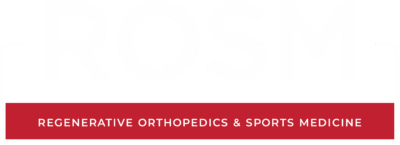Platelet-rich plasma (PRP) therapy has gained popularity in recent years as a non-surgical treatment option for various conditions such as joint pain and hair loss. But what exactly is PRP, and how does it work? In this blog post, we’ll explore the basics of PRP therapy and what you need to know.
PRP is a natural treatment that uses your own blood.
PRP therapy involves taking a small sample of your own blood and using a centrifuge to separate out the platelet-rich plasma, which is then injected back into your body at the site of injury or discomfort. Because PRP uses your own blood, there is minimal risk of infection or other complications. According to the American Academy of Orthopedic Surgeons, PRP therapy is a “safe, effective, and natural” treatment option for certain conditions.
PRP can help promote healing and reduce inflammation.
Platelets contain growth factors that help promote healing and tissue regeneration. When injected into the body, PRP can help stimulate the body’s natural healing processes and reduce inflammation. A review article published in the Journal of Clinical Medicine found that PRP therapy has been shown to be effective in reducing pain and improving function in patients with conditions such as osteoarthritis and tendinitis.
PRP therapy is a versatile treatment option.
PRP therapy can be used to treat a wide range of conditions, from sports injuries to chronic pain. Some of the most common uses of PRP therapy include treatment of osteoarthritis, tendinitis, and plantar fasciitis. PRP therapy can also be used in cosmetic procedures, such as hair restoration and skin rejuvenation. According to a study published in the Journal of Cosmetic Dermatology, PRP therapy can help improve skin texture, fine lines, and wrinkles.
PRP therapy is a minimally invasive procedure.
PRP therapy is a minimally invasive procedure that can be performed in a doctor’s office or outpatient setting. The procedure typically takes less than an hour and involves minimal downtime. According to a study published in the American Journal of Sports Medicine, PRP therapy is associated with fewer complications and faster recovery times compared to traditional surgical procedures.
PRP therapy may not be covered by insurance.
PRP therapy is still considered an experimental or investigational treatment by some insurance providers, and therefore may not be covered by insurance. However, a study published in the Journal of Orthopedic Surgery and Research found that PRP therapy may be a cost-effective treatment option for certain conditions, such as knee osteoarthritis, compared to other treatments.
Conclusion:
PRP therapy is a natural, versatile, and minimally invasive treatment option that can help promote healing and reduce inflammation. While insurance coverage may vary, PRP therapy has been shown to be effective in treating a wide range of conditions. If you’re considering PRP therapy, consult with a qualified healthcare provider to determine if it’s the right treatment option for you.


